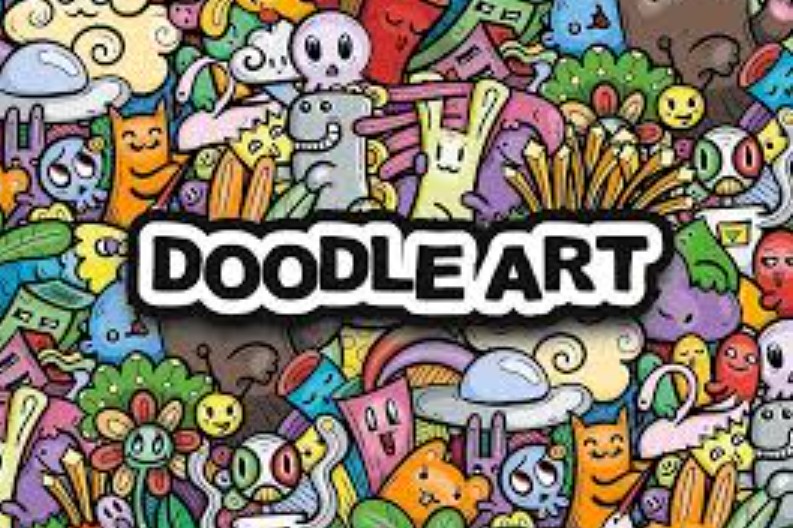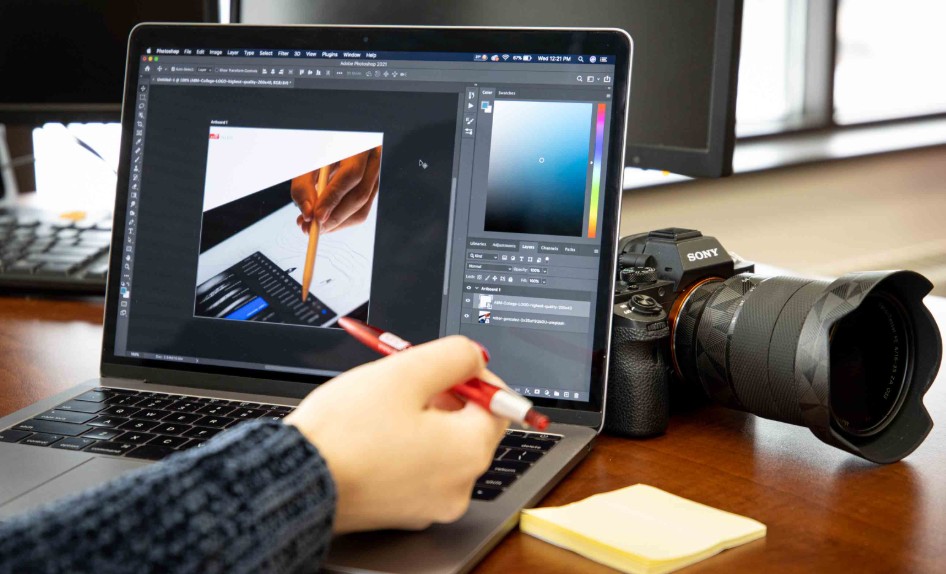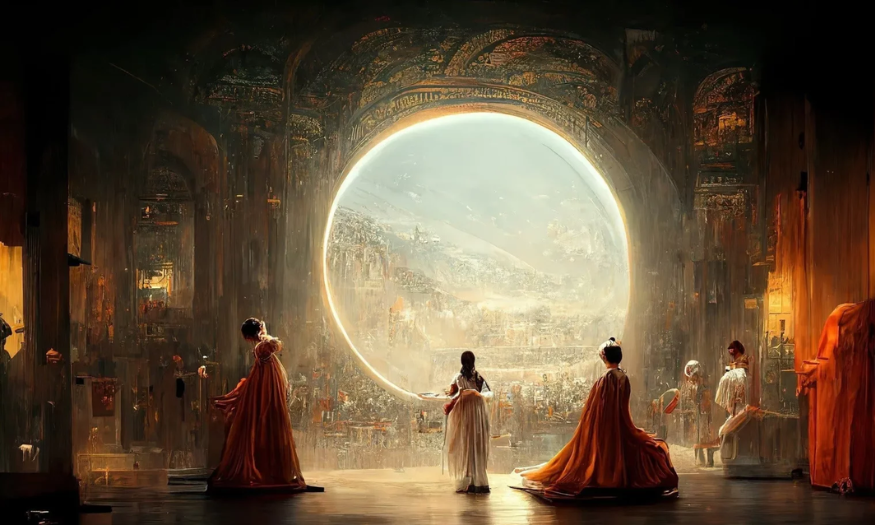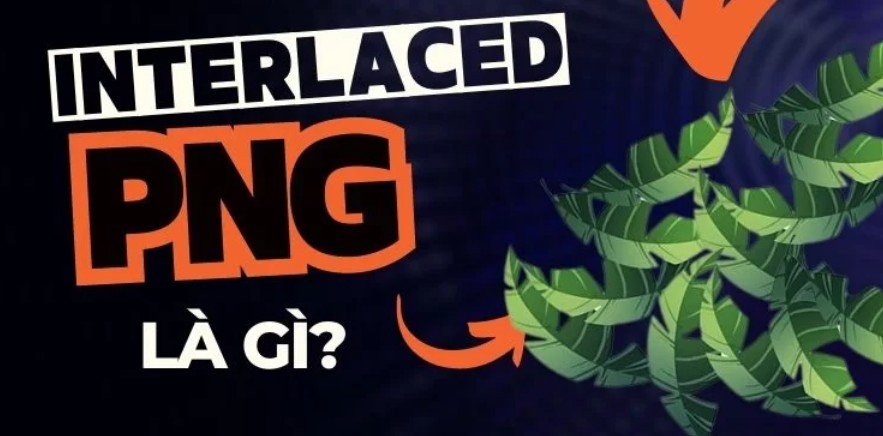Best Selling Products
Doodle Art – Art From Seemingly Meaningless Drawings
Nội dung
What is Doodle Art? Learn how seemingly random drawings become a creative art form that inspires and entertains millions.

Have you ever accidentally flipped through your notebook pages and seen tiny spirals, smiling eyes, and repetitive patterns right on the margins? That's D oodle : carefree, spontaneous sketches, originating from relaxing moments or simply a way to "relax" your mind during class, meetings, or while waiting for coffee. In the stressful pace of modern life, Doodle Art has grown from ordinary "scribbles" to a unique art style, favored by both beginners and professional artists. You can see doodles on book covers, advertising posters, character graphics, and even wall art collections. This article will take you deeper into Doodle Art. In addition, we will reveal the secret so that even if you are a "rookie", you can confidently try your hand at doodle art. Let's start this journey with SaDesign !
1. Basic information about Doodle Art
1.1. What is Doodle Art?
Doodle Art is a compound word of two words "Doodle" and "Art". In which, Doodle means the act of drawing unconsciously without any specific intention or purpose. Putting them together, we will have the concept of Doodle Art, which refers to the form of free artistic creation according to imagination and subconsciousness without following any available pattern or direction. Thanks to that, Doodle Art has broken the limits that have been set and forced people to follow in art. In fact, Doodle Art is a scribble, not too meticulously polished and somewhat messy and following a specific layout but extremely attractive and impressive. The object drawn on Doodle Art can be anything that suddenly appears in the imagination of the artist such as objects, animals, trees, people, cartoon characters, ... or even indefinite things that cannot be "named".
.png)
1.2. Distinguishing Doodle Art from Sketch and Illustration
Sketch
Sketches are quick, simple drawings used to capture ideas in the most direct and concise way. This is considered the first “draft” of a complete work or design.
Purpose: Express initial ideas, build layouts, and define the overall shape of characters, objects, or spaces before going into detail.
Illustration
Illustration is a specialized form of drawing, highly applicable and with a clear commercial purpose. These works are often accompanied by text or used as independent products in printed publications, advertisements, games, children's books, etc.
Purpose: To convey a specific message, illustrate the content of a story or product.
Doodle Art
Unlike sketches and illustrations, Doodle Art is a free form of art, often created spontaneously, without a clear pattern or commercial goal.
Purpose: To express personal feelings, for entertainment, relaxation or simply as a creative note-taking habit.
.png)
2. What is special about Doodle Art?
Not being repetitive and following a pattern is probably the most noticeable feature of Doodle Art. However, Doodle Art also contains many unique and interesting features such as:
Doodle Art Drawing Promotes Everyone's Creativity
Imagine an image in your head that you can’t express or describe in words, what would you do? The answer is to take a pen and draw Doodle Art with everything you imagine. The result is a unique Doodle Art drawn with creativity never shown before.
Doodle Art helps to remember information better
Scientists have proven that Doodle Art can help people remember more easily and remember longer. Accordingly, with Doodle Art, you can save knowledge in the form of images that you imagine. These images will be imprinted extremely strongly in your subconscious mind, helping you remember longer than writing long texts. Not only that, drawing Doodle Art in the process of receiving knowledge will also help you receive, remember and remember much longer than just listening to normal lectures. However, drawing Doodle Art in the learning process needs to be attached to the knowledge, not focusing too much on drawing and completely neglecting learning.
.png)
Doodle Art helps increase concentration
What do you do when you lose focus while doing work that requires high concentration? Listen to music, drink coffee, or take a break. And if those things don’t really work, you should try Doodle Art. Accordingly, draw everything in your subconscious, what is distracting, distracting, even annoying things. Unburdening yourself will help you focus on work more easily.
Doodle Art helps find the real person
There are no boundaries or frameworks in Doodle Art. Accordingly, you can do everything with just a Doodle Art pen. If you have never tried it, try Doodle Art right away to discover what is hidden deep inside and has not had the opportunity to be revealed outside.
Doodle Art is highly applicable
Thanks to its novelty and uniqueness, Doodle Art has extremely high applicability. In fact, Doodle Art works can be used in graphic design, web design, printing, etc.
.png)
3. Popular Doodle Art Styles
Doodle Art has evolved into many different styles today, each bringing its own experience and inspiration. Here are four typical styles you can try:
3.1. Zentangle
Complex patterns are made up of basic elements: parallel lines, swirls, polka dots, curves that repeat according to a certain “rule”.
Each Zentangle module (or “tile”) is usually square and of equal size, making it easy for the artist to replicate the pattern.
Because of its repetitive nature, Zentangle is likened to “meditation on paper”: when drawing, you can easily relax your mind and forget about daily stress.
Exquisite black and white Zentangle artworks are often printed as posters, greeting cards or used as backgrounds for high-end printing pages.
.png)
3.2. Doodle Typography
Combining lettering and interwoven decorative motifs: swirls, flowers, and fun icons.
The letters are no longer monotonous but become the "center" of the work, elaborately and vividly decorated.
.png)
Application:
Design personal or small brand logos, event posters, book covers and blog post titles.
Create a unique accent for your invitations, cafe menus or website landing pages.
3.3. Cartoon Doodles
Cartoon characters have minimalist lines and vivid facial expressions (grin, cry, look confused...).
Tell a story through small pictures: sometimes just 2–3 panels are enough to create a short mini-comic.
.png)
Style & Application:
Fun, approachable, perfect for kids content or youthful marketing campaigns.
Often appears in chat stickers, memes, simple GIF collections.
3.4. Pattern Doodles
Create repeating patterns by connecting small motifs: geometric patterns, icons, freehand drawings.
When joined, the pattern will join seamlessly, leaving no “seams” between the cells visible.
.png)
Advantages & Applications:
Easy to apply on large surfaces: decorative printed fabrics, gift wrapping paper, wallpaper, magazine covers.
With simple patterns, you can easily create vectors and duplicate them on multiple products while maintaining sharpness.
Doodle Art is not just a harmless pastime, but has become a unique art form with great potential for application. From spontaneous drawings, you can explore your creativity, relieve stress, and create unique design products. Start with a small pen, a few simple shapes, and don't be afraid of mistakes. Because it is in those doodles that your artistic "ego" will gradually appear and shine.












































